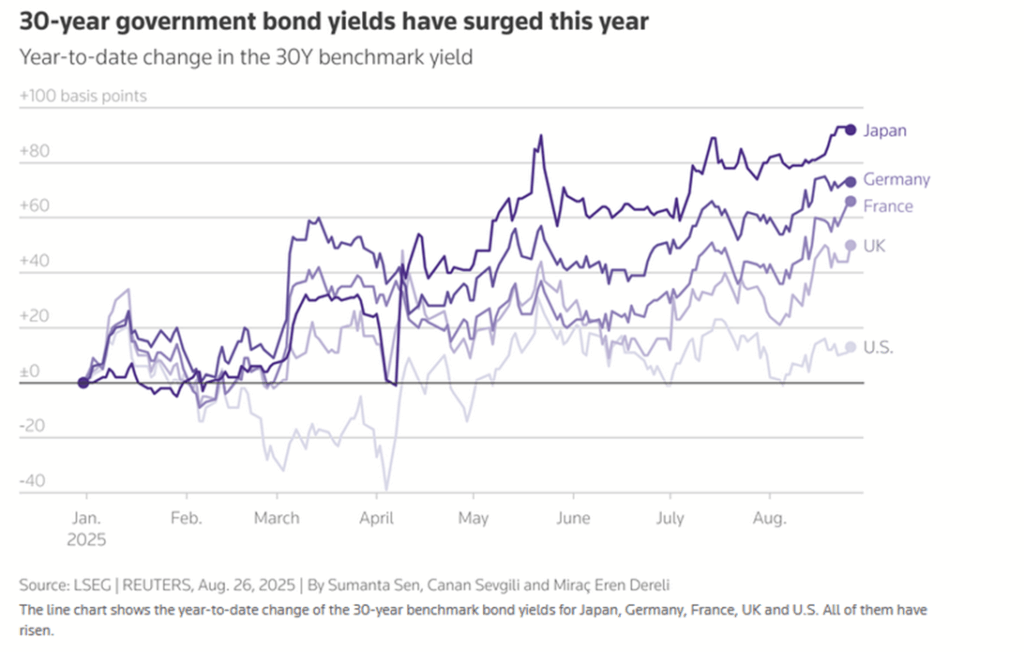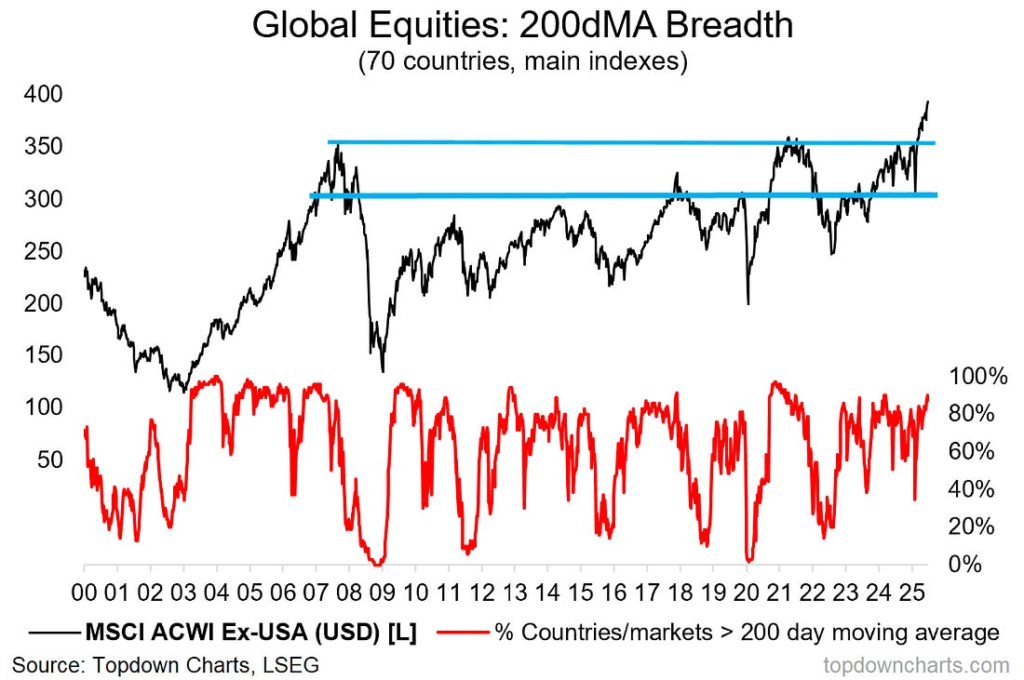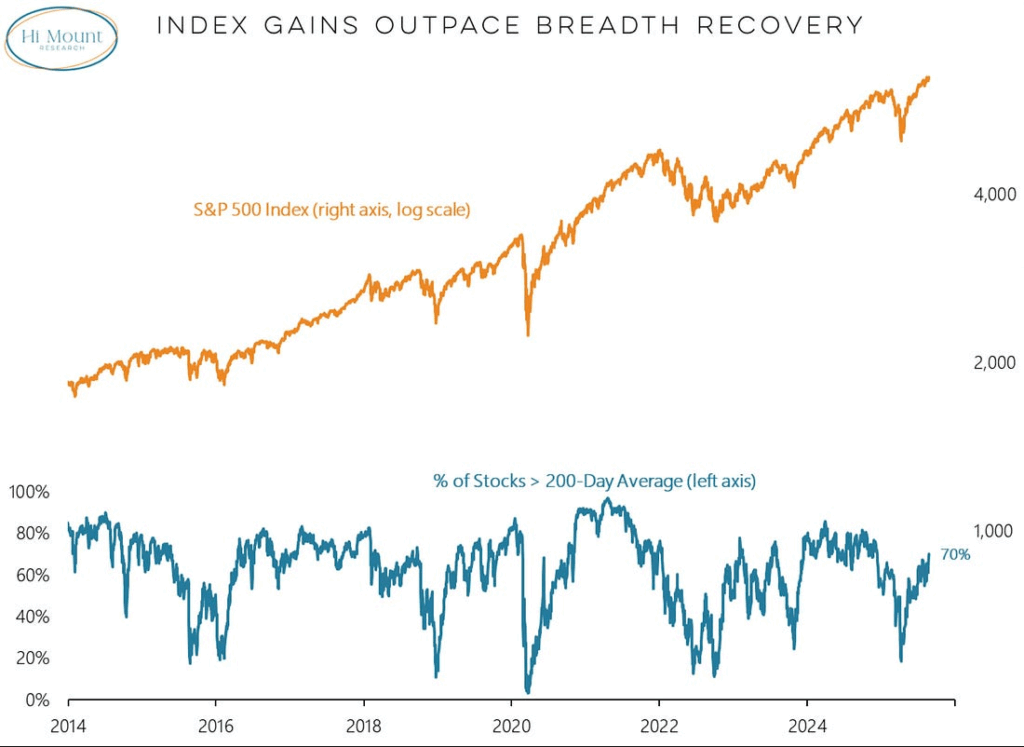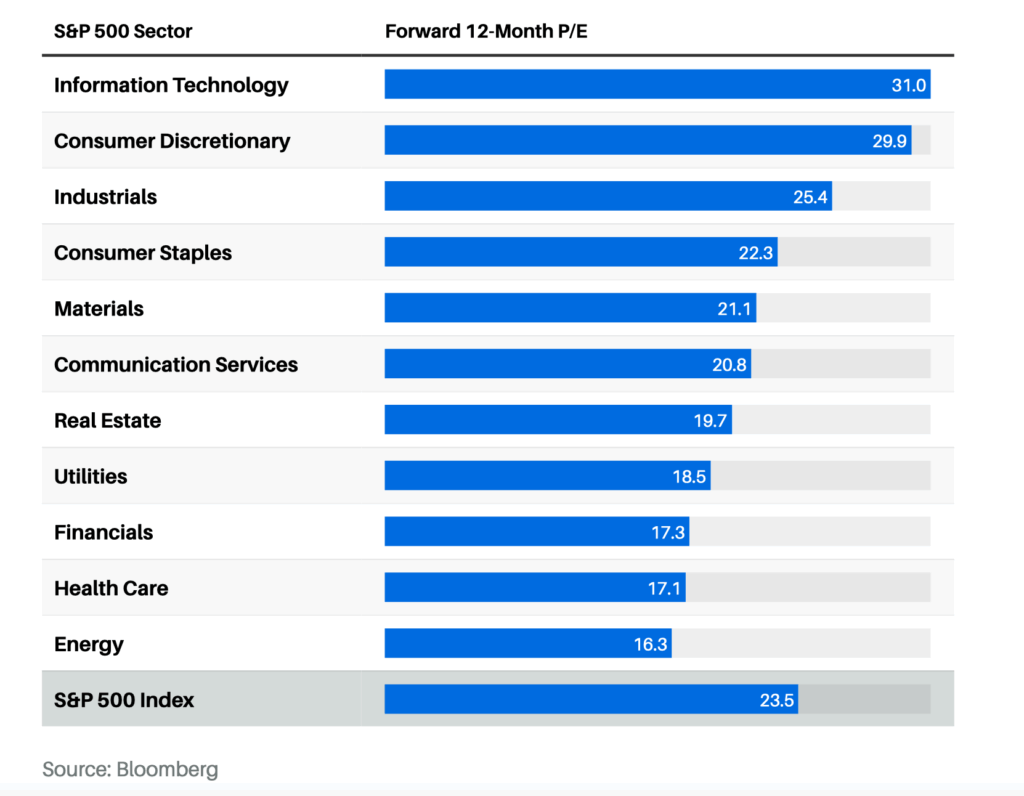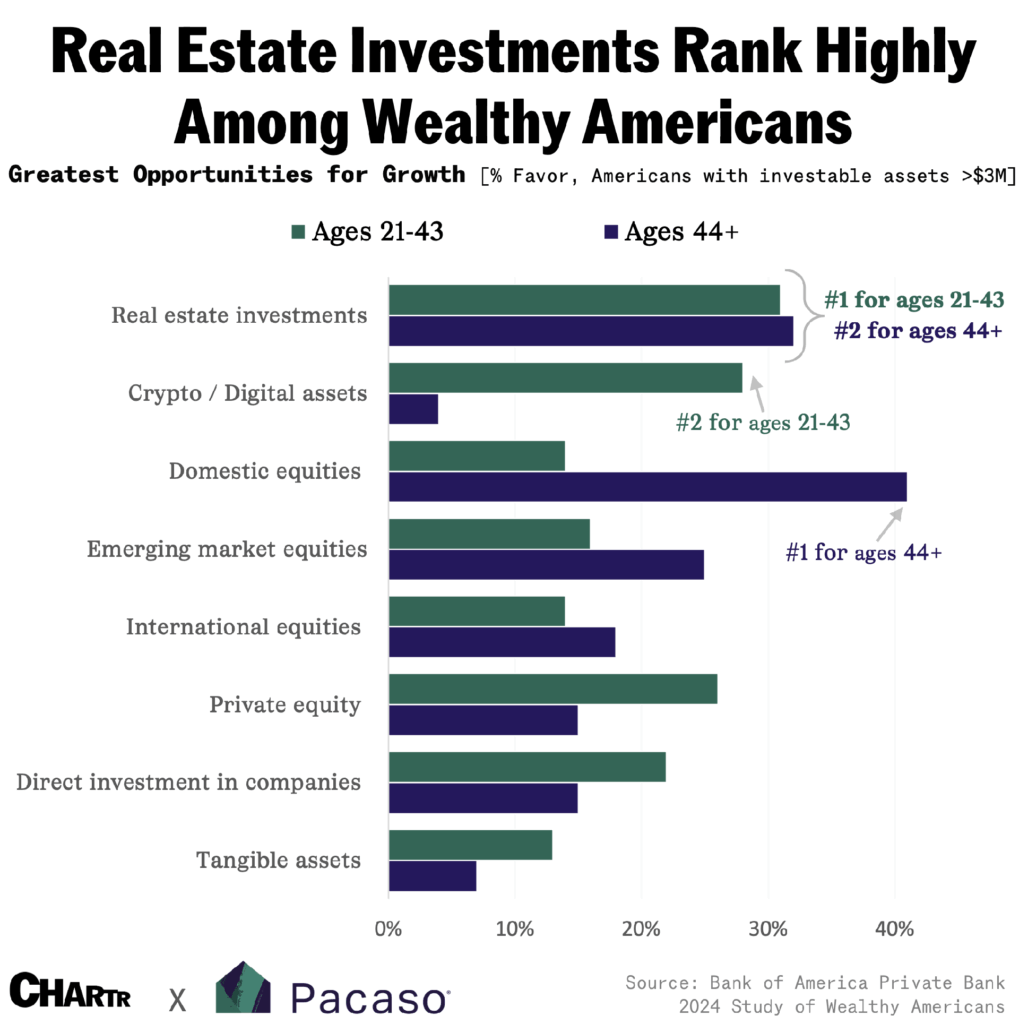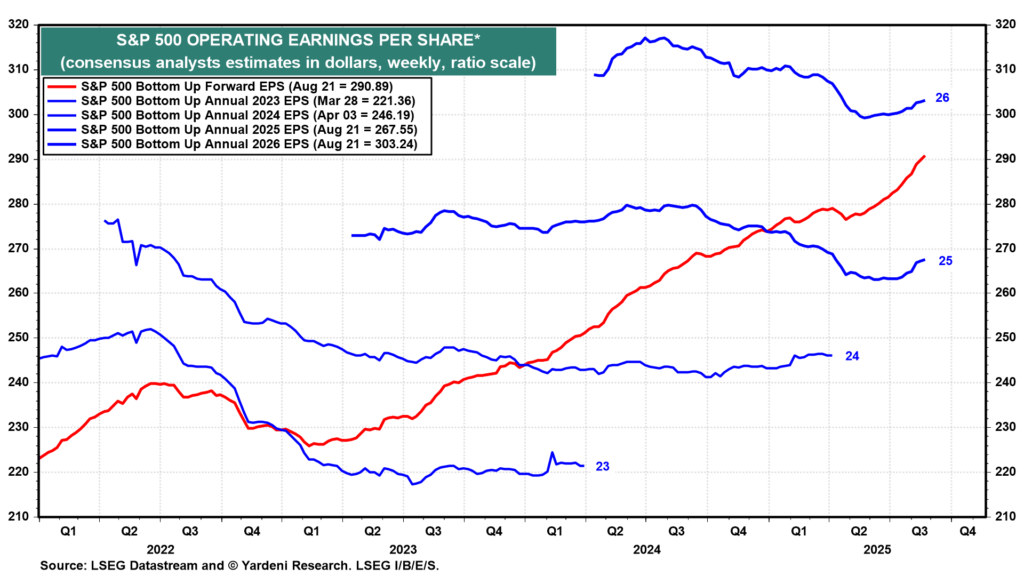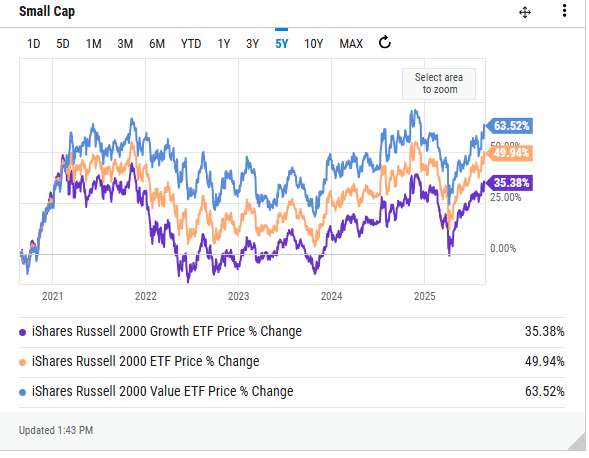1. Second Largest Weekly Inflow into Small Caps Ever

David Marlin
2. Gold to S&P Historical Correlation Shift

The Kobeissi Letter
3. Chineses Internet Stocks KWEB Breaks Above 2022 Levels

StockCharts
4. Chinese Margin Balances Break Above 2014 Levels

ZeroHedge
5. Trump Media DJT -50% for 2025

Trump Media & Technology Group Corp
6. Ethereum Reserves Lowest Level in 3 Years
Zerohedge–Ether (ETH) reserves on centralized exchanges have fallen to the lowest level in three years as demand grows from investment funds and corporate buyers.
According to data from CryptoQuant, reserves have dropped by nearly 10.7 million ETH since peaking at around 28.8 million in September 2022. Holdings now stand at about 17.4 million ETH, with roughly 2.5 million ETH leaving exchanges in the past three months alone.
The shrinking supply comes as new channels for Ether exposure have gained traction. Spot ETH exchange-traded funds (ETFs), launched in July 2024, have since attracted net inflows of more than $13 billion, according to CoinGlass data. Between June and August, the funds pulled in over $10 billion in net inflows, led by a record $5.4 billion in July alone.
Corporate treasuries are also driving demand. Several publicly traded companies have announced ETH treasuries over the past few months, with regular corporate purchases affecting the token’s supply on exchanges.

ZeroHedge
Ethereum exchange reserves – All exchanges. Source: CryptoQuant
7. Bitcoin held by public companies passes 1 million BTC amid asset’s rising popularity
By RT Watson
Quick Take
- The total amount of bitcoin held by public companies has surpassed 1 million BTC, according to BitcoinTreasuries data.
- Companies eager to capitalize on Bitcoin’s steady price growth have been accumulating the cryptocurrency.
The total amount of bitcoin held by public companies surpassed 1 million BTC -1.68% on Thursday, according to BitcoinTreasuries data.Over the past year, the number of companies seeking to capitalize on bitcoin’s steady price growth has been increasing rapidly. Michael Saylor’s Strategy is considered the pioneer of the trend, with many other companies also deciding to hold the cryptocurrency, including Bitcoin miners like Mara Holdings and firms such as Metaplanet, Semler Scientific, and GameStop all holding BTC on their balance sheets.
8. New AI Billionaires

Visual Capitalist
9. CNBC’s Official NFL Team Valuations 2025
| Rank | Team | Value | Revenue | EBITDA | Debt as % of value | Owner(s) |
| 1 | Dallas Cowboys | $12.5B | $1.27B | $577M | 2% | Jerry Jones |
| 2 | Los Angeles Rams | $10.7B | $875M | $252M | 28% | Stanley Kroenke |
| 3 | New York Giants | $10.5B | $765M | $211M | 4% | John Mara, Steven Tisch |
| 4 | Las Vegas Raiders | $9.3B | $832M | $202M | 14% | Mark Davis |
| 5 | New England Patriots | $9.25B | $789M | $220M | 4% | Robert Kraft |
| 6 | New York Jets | $9.1B | $730M | $199M | 6% | Woody Johnson, Christopher Johnson |
| 7 | Chicago Bears | $8.9B | $627M | $74M | 1% | The McCaskey family, Ryan family |
| 8 | San Francisco 49ers | $8.6B | $745M | $113M | 3% | The York family |
| 9 | Miami Dolphins | $8.55B | $740M | $158M | 6% | Stephen Ross |
| 10 | Philadelphia Eagles | $8.5B | $735M | $124M | 2% | Jeffrey Lurie |
https://www.cnbc.com/2025/09/04/cnbcs-official-nfl-team-valuations-2025.html
10. The Brain Reset Revolution: Why Ibogaine Could Transform Mental Health
Co-Founder & Chief Medical Officer of Function Health
September 3, 2025
We’re living through a mental health crisis of unprecedented scale. The WHO reports that one out of every two people will have a psychiatric diagnosis at some point in their lifetime. Let that sink in: half of humanity will struggle with mental illness.
Our current psychiatric treatments aren’t meeting this challenge.
When you look at the pivotal trials that led to Prozac’s approval, the difference between the active drug and placebo was just 2-3 points on a 60-point scale. The noise between different raters evaluating patients was the same magnitude as the treatment effect. We’re essentially treating people with tools that barely outperform chance.
But there’s a compound that’s changing everything we thought we knew about treating mental illness, and it comes from the bark of an African tree.
The Ibogaine Revolution
I recently interviewed Dr. Nolan Williams from Stanford, whose groundbreaking research on ibogaine is rewriting the rules of psychiatry. This compound, used ceremonially for centuries by the Bwiti people of Gabon, doesn’t work like anything in our current psychiatric arsenal.
The results from Dr. Williams’ study with 30 special operations veterans suffering from traumatic brain injury were staggering:
- 88% reduction in PTSD symptoms
- 87% reduction in depression
- 81% reduction in anxiety
- Dramatic improvement in cognitive function
- Disability ratings dropped from moderate to essentially none
When Dr. Williams first saw these results, he didn’t believe them. He made his postdoc reanalyze the data multiple times.
How It Actually Works
Unlike our crude “single key, single lock” approach to psychiatric medication, ibogaine acts on virtually every neurotransmitter system in the brain simultaneously. It’s what we call a “pleiotropic” compound, one that works through multiple pathways.
The mechanism is revolutionary:
- Dopamine System Reset: Ibogaine upregulates glial-derived neurotrophic factor (GDNF), which restores dopamine neuron health. In animal studies, mice trained to self-administer alcohol until death would completely stop after a single ibogaine dose.
- Brain Plasticity Enhancement: It increases brain-derived neurotrophic factor (BDNF), promoting neurogenesis and neuroplasticity, literally growing new brain cells and connections.
- Life Review Process: Unlike MDMA, which requires guided therapy, ibogaine automatically puts the brain into a state where people review traumatic memories from a position of emotional neutrality. They reconsolidate these memories without the overwhelming emotional charge.
- Brain Age Reversal: Perhaps most remarkably, AI analysis of brain scans showed participants’ brains appeared 1.5 years younger one month after treatment. We’re talking about neurological age reversal from a single dose.
The Addiction Breakthrough
The anti-addiction effects are perhaps the most dramatic. Veterans in the study weren’t seeking addiction treatment, yet nearly all reported their alcohol consumption dropped to almost zero. They didn’t expect this outcome, it was an “off-target” effect that speaks to ibogaine’s broad reset of the reward system.
This mirrors the original discovery story: fifty years ago, a heroin addict in Amsterdam tried some pills, and the next day his addiction and withdrawal symptoms were completely gone. That launched decades of underground research.
The Safety Question
Yes, ibogaine has cardiac risks. It can cause dangerous heart rhythm abnormalities. But here’s the crucial context: many FDA-approved drugs carry similar or greater cardiac risks. The difference is stigma around mental illness versus “real” medical conditions.
We use a cardiac drug called Tikosyn that has a 1 in 100 risk of life-threatening arrhythmias to treat atrial fibrillation. We justify this risk because untreated A-fib can cause fatal strokes. Yet we resist studying ibogaine for severe PTSD or addiction, conditions with extremely high mortality rates, because of similar cardiac risks.
The solution isn’t to ignore the risk but to manage it properly. Prophylactic intravenous magnesium appears to prevent these cardiac complications entirely. Dr. Williams reports that clinics using this protocol haven’t had cardiac events.
Beyond Current Applications
The implications extend far beyond PTSD and addiction. With 75% of Americans overweight and 14% of the global population addicted to food (the same rate as alcohol addiction), could ibogaine address food addiction? The dopamine system reset that eliminates drug cravings might work for sugar and processed food cravings too.
We’re also seeing signals for traumatic brain injury recovery, cognitive enhancement, and even potential applications in neurodegenerative diseases through its effects on neuroplasticity.
The Path Forward
We’re entering “Psychiatry 3.0” moving from talk therapy (1.0) and crude pharmacology (2.0) to circuit-based interventions that can rapidly reset dysfunctional brain networks.
Dr. Williams expects FDA approval for human trials soon, with Texas allocating $50 million for ibogaine research. Within 5-10 years, we might have safe, monitored protocols available in the US.
But we also need to combine these breakthroughs with metabolic psychiatry, addressing the inflammation, nutrient deficiencies, and metabolic dysfunction that underlie many mental health issues. Ibogaine might provide the neurological reset that makes other therapeutic interventions more effective.
The Bigger Picture
We’re at an inflection point in medicine. For too long, we’ve treated mental illness as somehow less “real” than physical illness, stigmatizing conditions that are literally structural and functional problems in the brain.
Imagine if someone was limping from a torn meniscus and we said, “You’re just weak, think positive thoughts.” That’s essentially how we’ve approached depression, PTSD, and addiction. But these are measurable, physical brain dysfunctions that we can now see on scans and treat with precision.
The ibogaine revolution represents hope for millions suffering from treatment-resistant mental illness. It’s not just about incremental improvement, it’s about fundamental brain repair and reset.
As we move forward, we need courage from researchers like Dr. Williams, support for rigorous clinical trials, and a willingness to challenge our assumptions about what’s possible in mental healthcare.
The future of psychiatry isn’t about managing symptoms with daily pills that barely work. It’s about profound healing through compounds that have co-evolved with human consciousness for millennia.
This article is based on my recent podcast interview with Dr. Nolan Williams from Stanford University. For complete scientific references and the full conversation, listen to The Doctor Hyman Show: https://youtu.be/qwFhTkcUXog?si=5bPIRooZ89uWiy16


